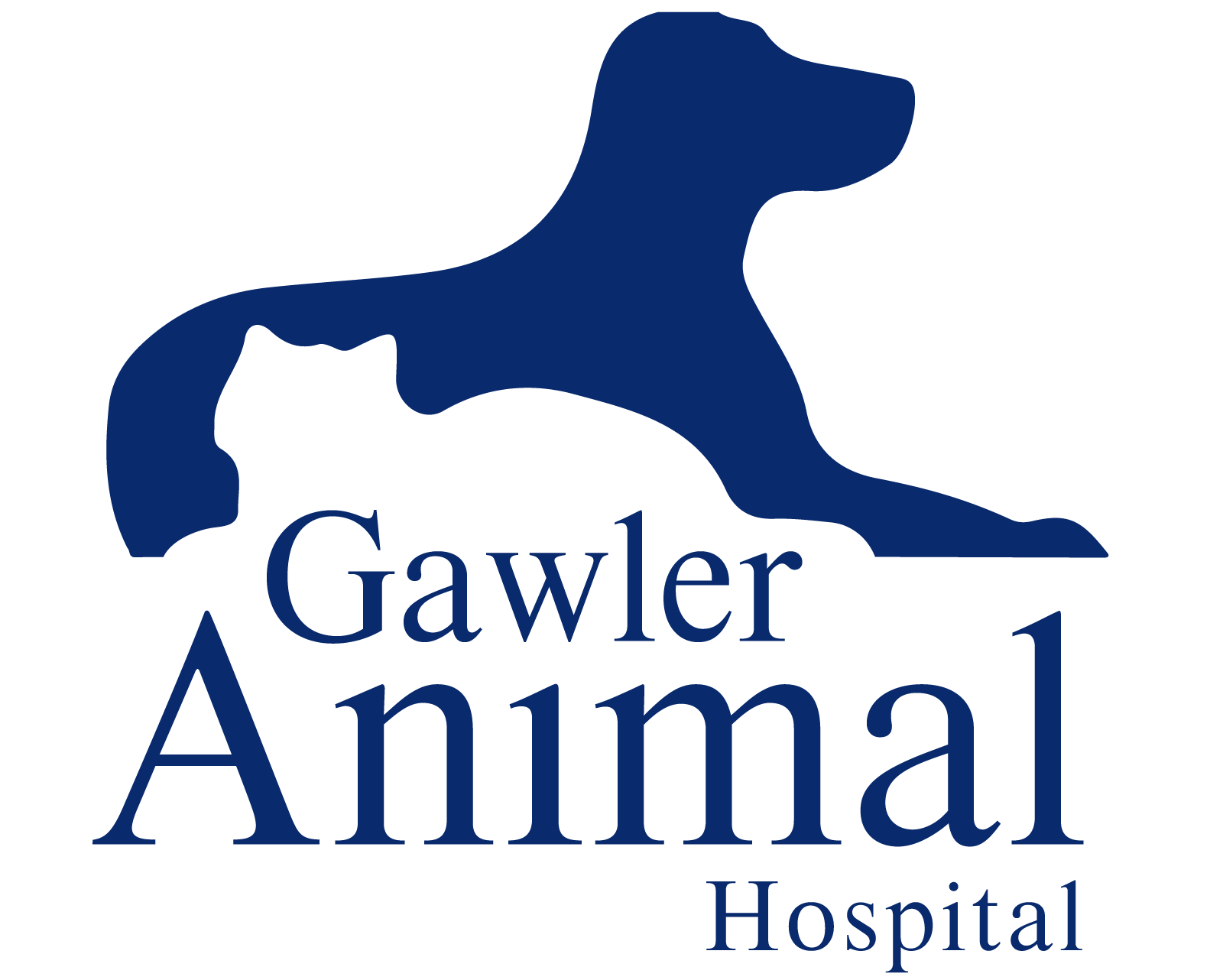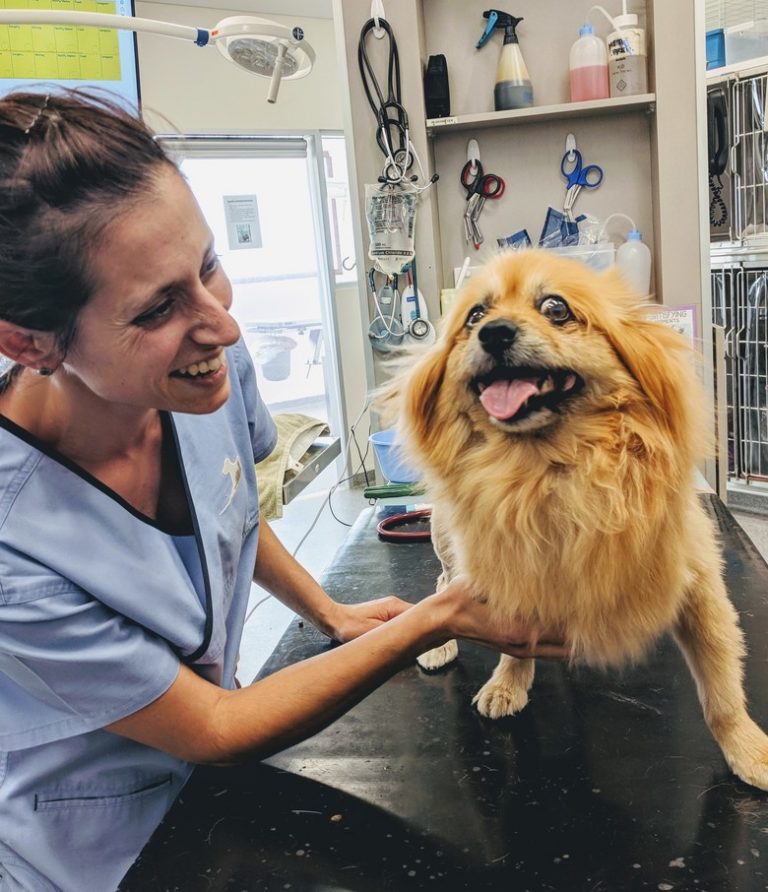As general veterinary practitioners, we have the challenge of running a busy preventive healthcare schedule and also being the local emergency department. This makes life really varied for us and keeps us on our toes. Actually, it’s one of the reasons that being in veterinary practice is so fulfilling as we never have time to be bored!
Last week, we saw one such emergency when little Sienna arrived at our hospital with major breathing issues. Her owner, Donna McInerny, had just collected her from the groomers and was walking her home. Sienna, a little Pomeranian Terrier, started coughing and rapidly deteriorated to the point she was struggling to breathe. Donna rushed her straight in to us. Dr Luisa went straight to work and started immediate treatment involving fluids, anti-inflammatories and oxygen therapy. Unfortunately, Sienna was becoming more and more distressed and so we had to anaesthetise her. As soon as we passed an endotracheal tube, Sienna was able to breathe much more normally but we still needed to find out what was causing this.
Although Sienna’s blood tests were unremarkable, x-rays of her chest made us suspicious of a collapsed trachea. By passing an endoscope down her throat, we confirmed our suspicion – this was exactly what was happening.
Collapsing trachea is a condition we occasionally see in dogs but doesn’t usually cause such dramatic signs as we saw in this case. Nonetheless, it can be a flat-out emergency and I thought it would be worthwhile alerting you to some of the main points on how it presents and what causes it.
The function of the trachea (windpipe) is to transport oxygen into the lungs and carbon dioxide out.
- The trachea, or windpipe, is a tube which connects the lungs to the outside world!
- It’s primary function is to allow oxygen into the lungs and carbon dioxide to escape
- It starts at the larynx (voicebox) and makes its way down the throat to the lungs
- The tube structure is made up of a series of incomplete cartilage rings joined up by a layer of mucosa (soft tissue)
- The incomplete rings allow the trachea to compress a bit when the pet is swallowing food so there is some logic to nature’s designs!
- The layer of mucosa provides protection but also produces mucus which helps clear out any debris, bacteria, viral infections or other unwanted invaders!
Tracheal collapse can be a mild, long-standing condition or can happen acutely because of inflammation or irritation
- On one side, the cartilage rings don’t quite join and so the whole thing is held together by that mucosal layer
- In some dogs, that gap between the rings is quite wide and this allows the mucosa to stretch a lot more
- The negative pressure caused by inspiration (breathing in) can cause this mucosa to ‘collapse’ inwards and so block part (or almost all) of the trachea itself
- Irritation or inflammation can predispose this whole process
It generally happens in small-breed dogs
- We don’t often find this happening in larger breeds
- Most cases affect slightly older dogs
Cats don’t often suffer from this condition
- It can happen in cats but, luckily, it’s not very common!
Dogs can present with a variety of signs such as cough, laboured breathing, collapse and a ‘blue’ appearance to their mouths
- In mild cases, we see dogs with just an irritant cough
- This can progress to laboured, noisy breathing
- In severe cases, such as Sienna, we can see dogs in marked respiratory distress or even collapsing
- Because they can’t get enough oxygen, these dogs end up with a somewhat blue appearance to their tongues and gums (non-oxygenated blood looks blue!).
- In Sienna’s case, the excessive panting caused her temperature to spike and her heart-rate to skyrocket
Treatment revolves around exercise modification, treating the acute cause or even surgery in extreme cases
- In mild cases, it’s just a question of exercise restriction and allowing the cough to settle
- In acute cases, we can often treat whatever has caused this to occur – exposure to irritants, allergic reaction or infection – and this will allow the breathing to settle
- For cases like Sienna, physically opening up the airways to allow sufficient oxygen supply is an essential, life-saving component of treatment
- In long-standing but worsening cases, or in those cases that don’t respond well to medical treatment, we can arrange surgical correction of the collapsing section of trachea.
In Sienna’s case, we had to keep her under anaesthetic for a couple of hours before her heart rate started to settle and her breathing returned to a slightly more normal state. Over time, her temperature also dropped to a more normal level and her blood oxygen levels improved. In the meantime, the drugs we’d given her started to take effect and to reduce the irritation in her throat. Despite this, we still weren’t able to take her off oxygen and needed to transfer her to an overnight emergency facility. She stayed there for a further 24 hours before she was able to go home.
Donna brought Sienna back in to see Dr Luisa the following day, by which time she was much improved although still not 100% back to normal breathing. The plan at this stage is to continue with anti-inflammatory medication and review her over the next two weeks. If things don’t completely settle, the next step will be surgery to prevent a repeat of her severe collapsing episode.
In the meantime, Sienna is a much happier dog and Donna a much happier, relieved owner!
If you’re concerned that your dog may have a breathing problem or If you want to find out more about collapsing trachea, give us a call on 8522 3500 or book an appointment directly.






